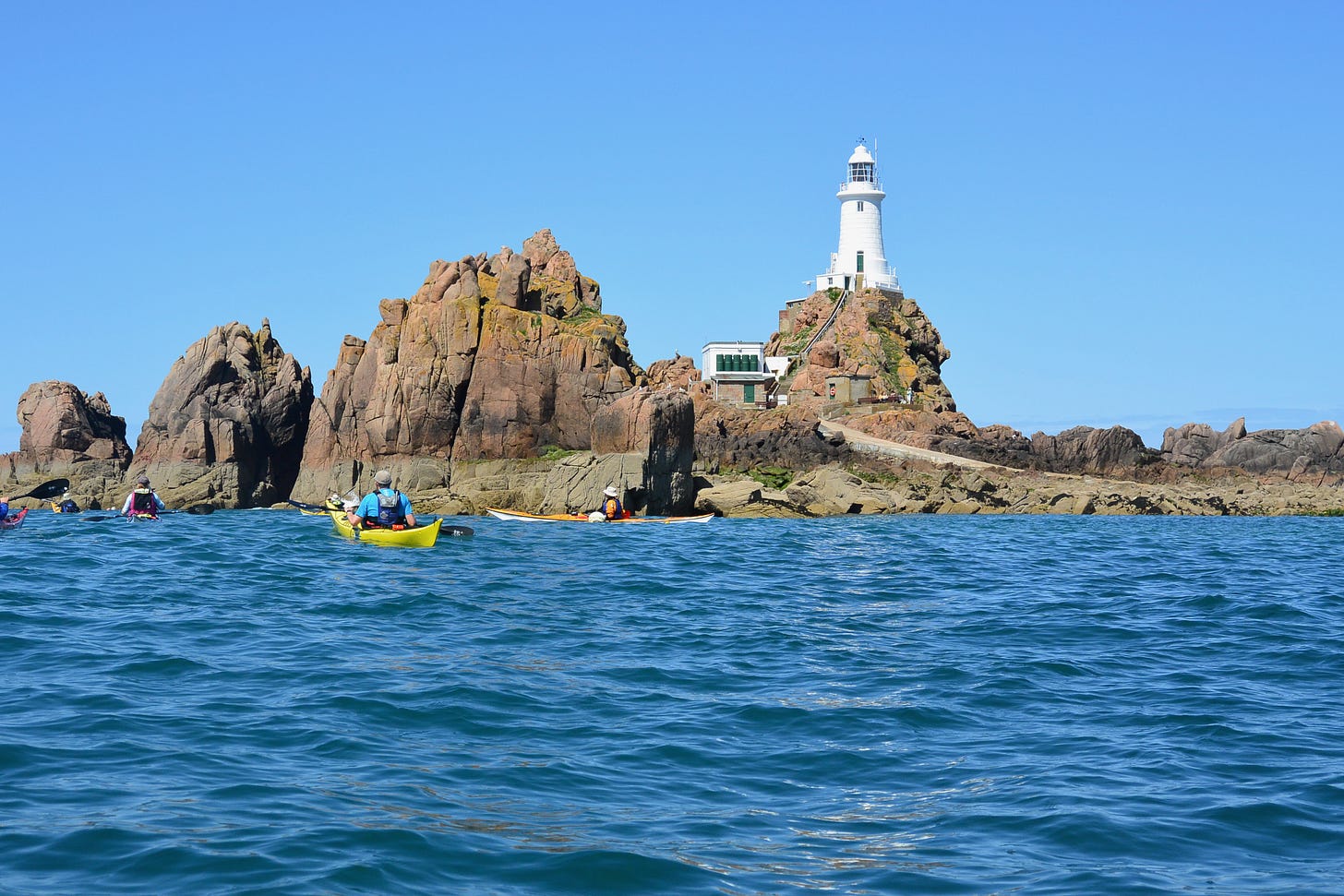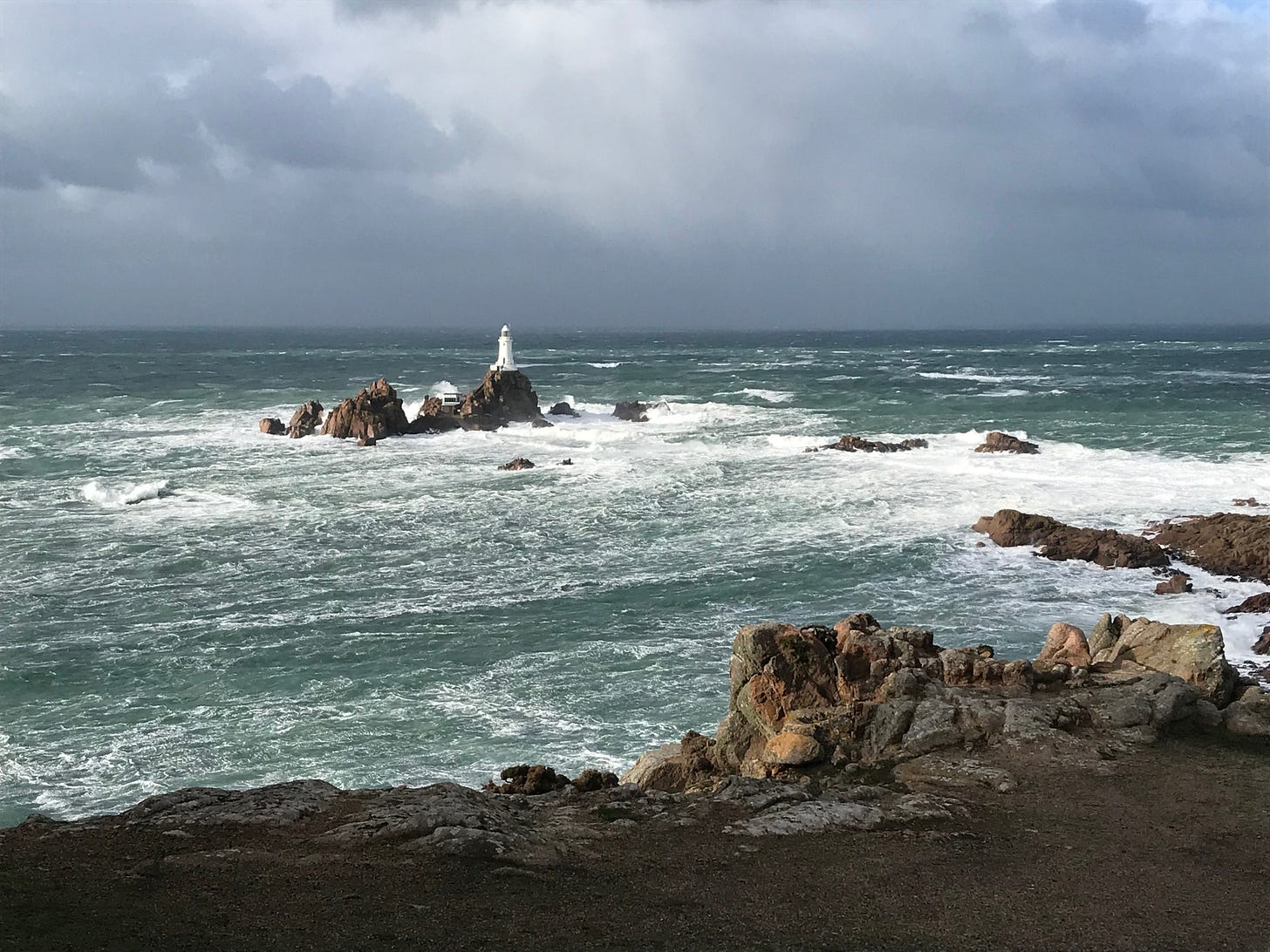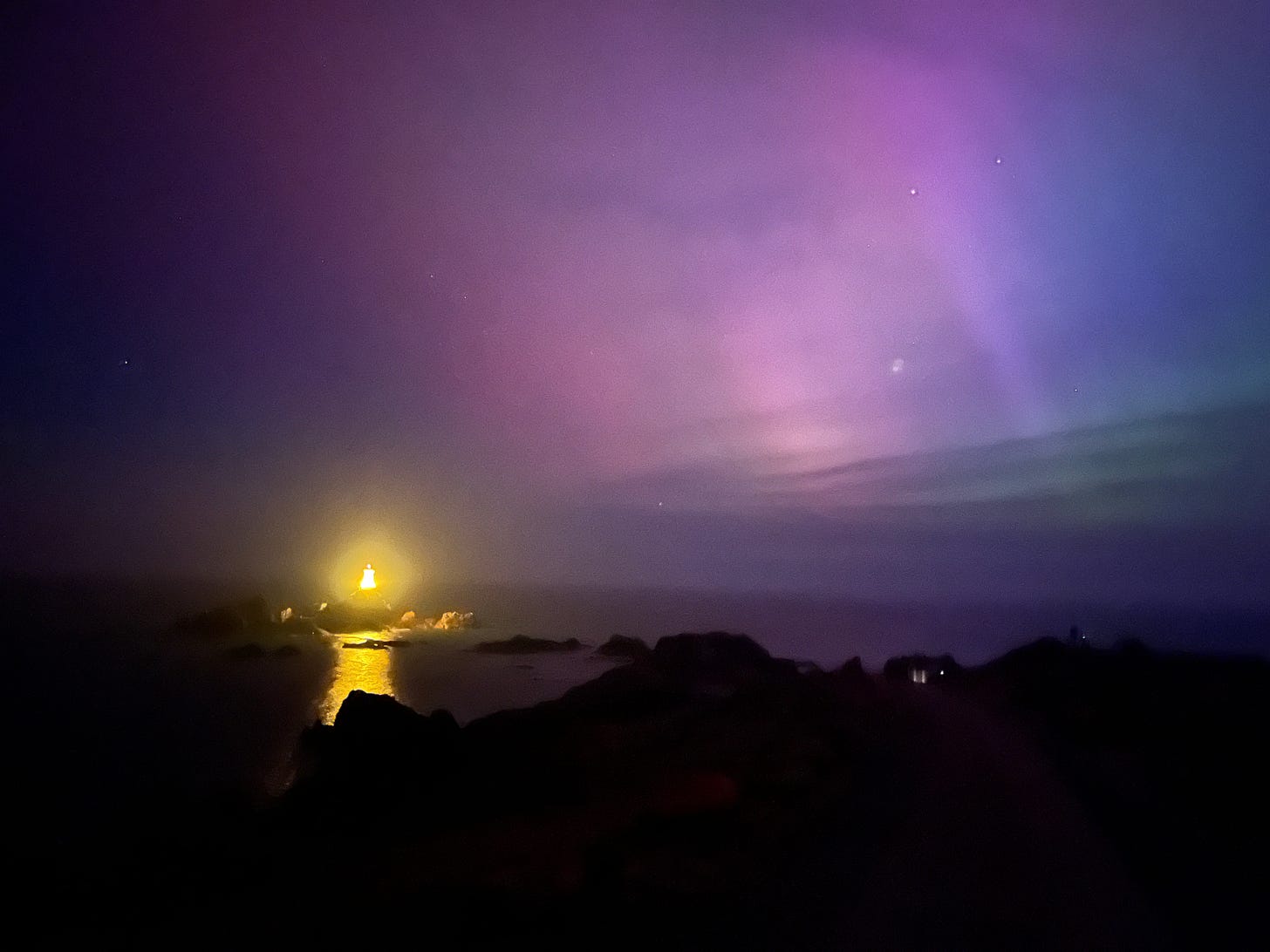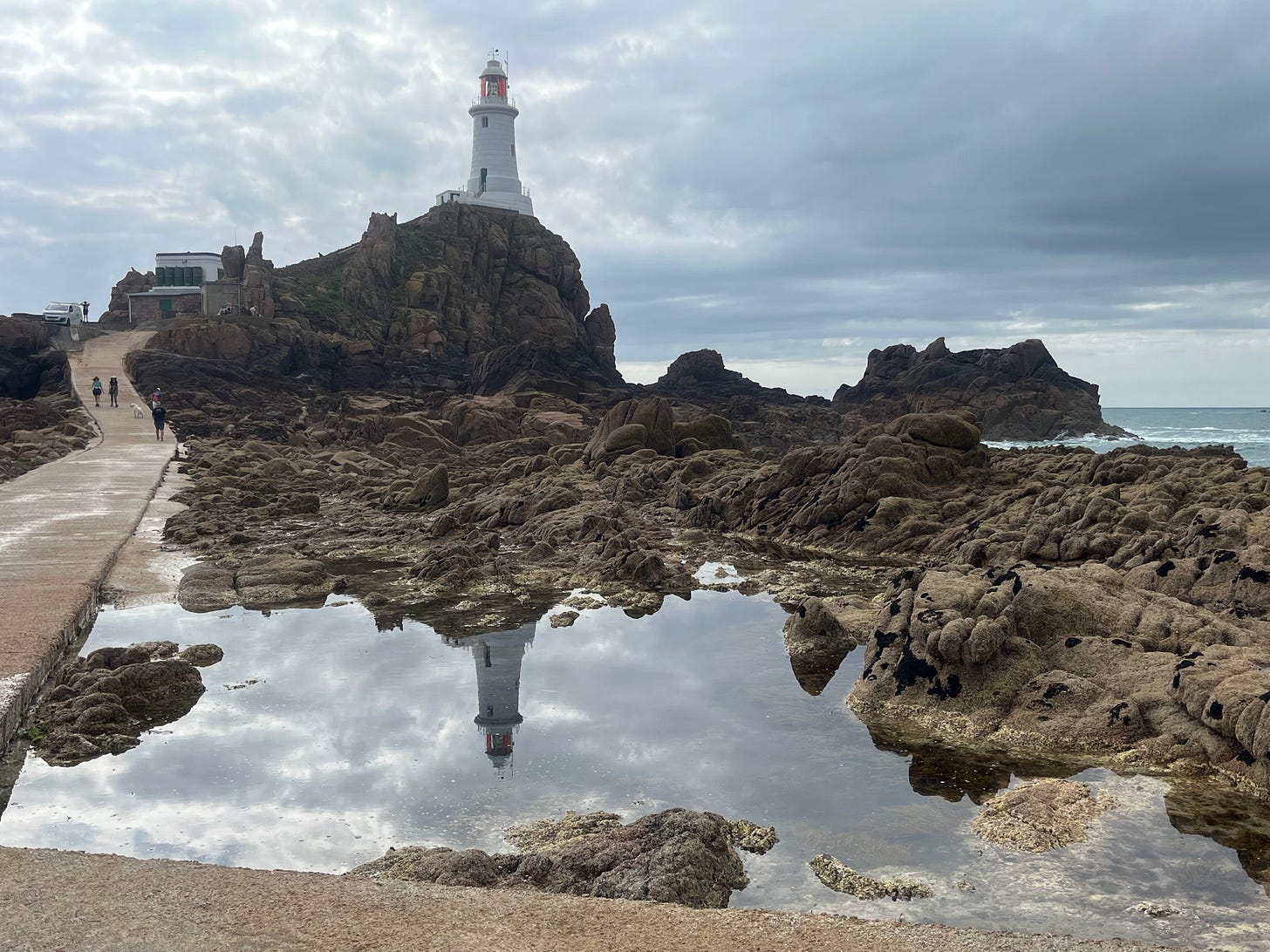Just over a mile from my house, lies one of the most distinctive features of the Island of Jersey, Corbière Lighthouse. First lit in 1874, this spectacular sentinel of the south west corner of the island, is possibly the most photographed location on Jersey.

I have lost count of the number of times I have paddled past this location, or driven past, perhaps to witness the fury of an Atlantic storm unleashing its power against the reef, or simply sat outside the Corbiere Phare drinking a pint whilst watching the sun sink below the western horizon. Until Monday though I had never had the opportunity to visit this iconic landmark.
Nicky (my wife) and a couple of other Blue Badge Guides from Jersey Uncovered, have been appointed by Ports of Jersey to run guided visits to the lighthouse. It has proved to be extremely popular, with numerous groups booking visits, who wouldn’t want to see the inside of a working lighthouse?

Meeting in the lower car park at Corbiere, the visit starts with some facts as to why the lighthouse was built. The wreck of the “Express” on the 20th September 1859, just to the east of Corbiere, provided extra impetus to the calls for a lighthouse to be built, marking the south west point of Jersey. The “Express” had left St Helier bound for Weymouth, and in an attempt to shave a few minutes off the crossing, the Captain took an inside passage to the north of Corbiere, striking the port bow. The decision was taken to return to St Helier but actually only reached the bay on the the south side of Corbiere. Of the 150 passengers and crew on board, all were saved apart from 2 men who drowned after panicking and contrary to the advice of the crew attempted to get into one of the lifeboats. Apparently the decision to land in the small bay was taken following the advice of a Mr Brett, a passenger with local knowledge. The wreck is the subject of a painting by Philip Ouless, the premier Jersey maritime artist of the 19th Century.

The walk continues towards the causeway across to the lighthouse. With a pause to consider some other key points. Corbiere was built to a design of Sir John Coode and under the engineer Imrie Bell, costing the princely sum of £8,001. The light was built by the States of Jersey, in contrast to the other lighthouses in the Channel Islands, which were built and continue to be operated by Trinity House. The price included the cost of the lighthouse keepers cottages at the bottom of the slip. These are still owned by the States of Jersey and one of the last lighthouse keepers still lives there. Often the keepers wives would operate a small cafe out of their kitchens, which I remember in the early 1970’s. The lighthouse keepers worked a 48 hour shift and during that time would stay in the curved bunks in the lighthouse. An easier job than those working in more isolated spots. A recent visitor told of how their grandma used to take lunch over to her father on the lighhouse.
At the start of the causeway there is a memorial plaque to Peter Larbalestier, an assistant lighthouse keeper, who lost his life on the 28th May 1946, whilst attempting to rescue a visitor to the island, who had been cut off by the rising tide.
I remember landing on the slipway after a Jersey Canoe Club session a number of years ago. One of the members of the group was Peter Larbalestier, and I expressed surprise that he had the same name as the lighthouse keeper, whose attempts to save a life are recorded. Peter replied “that’s not that surprising as I am named after as him, he was my uncle”. There is a photograph in the entrance to the Corbiere Phare, a restaurant and bar, of Peter Larbalestier, the lighthouse keeper. The resemblance between Peter the lighthouse keeper and Peter the kayaker is uncanny.
During the occupation of Jersey 1940 - 45, the light was extinguished but the keepers were kept on to maintain the light in case it was needed. The keepers had to move out of the cottages as these were used for German soldiers. Another recent visitor who was a child in the occupation remembers how the officers used to march across the causeway to swap duties with those who were stationed in the bunker to the west of the lighthouse. She also remembers her family hiding the carcass of a pig in the engine room as rations were scarce and a meal of pork a real treat.
The walk out to the lighthouse is always enjoyable but my choice would be those winter days when a full westerly gale is blowing. The air filled with spume and your lips encrusted with salt. On days like that the noise of the breaking waves can be all consuming. Monday was far quieter but it did include the obligatory stop at the rock pool, which has the perfect reflection of the lighthouse.

A visit to the lighthouse is an amazing experience with so much to see and absorb before arriving at the steps to the lighthouse itself. It is a fascinating place for anyone who has an interest in maritime history. The story of the visit around the inside of the lighthouse will be covered in a further post at the weekend.





Hoping one day to get a visit in there.